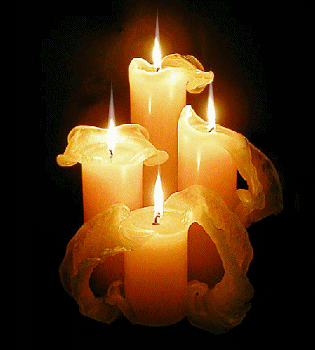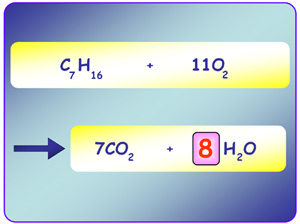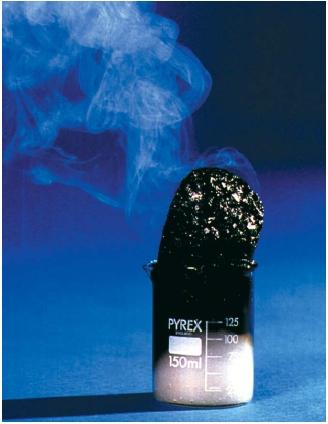
We continued our lesson on Stoichiometry learning how to convert from mass to mass
Example: Lead (IV) nitrate reacts with 5.0 g of potassium iodied. how many grams of Lead(IV) Nitrate are required?
Pb(NO3) + 4 KI = 4KO3 + PbI4
5g x 1 mol KI/ 165.9g x 1 Pb(NO3)4/4KI x 455.2 / 1mol Pb(NO3)4 = 3.4g
when converting mass to mass it requires one extra you just have to convert the number of moles into grams.
Example: given the reaction 4CH3No2 + 3 O2 = 4 Co2 + 6H2O + 2N2 what mass of H2o is produced when .150g of CH3NO2 is burned?
.150g Ch3No2 x 1 mol Ch3NO2/ 61.0g Ch3NO2 x 6mol H2O / 4mol CH3NO2 x 18.0 g H2O/ 1mol H2O = .0662g
after learning all of this Mr.Doktor taught us Percent Yield
-theoretical yield of a reaction is the quantity or products expected
-the amount produced in an experiment is the actual yield
percent yield formula = Actualy mass of product / Predicted mass of product x 100
you want to get the number closes to 100.
Example:
the production of Urea CO(NH2)2 is given by:
2NH3 + CO2 = CO(NH2)2 + H2O
If 47.7g of Urea are produced determine the theoretical yield of 1 mol of CO2 reacts
1mol CO2 x 1mol CO(NH2)2 / 1mol CO2 = 1mol CO(NH2)2
1mol CO(NH2) x 60.1g / 1mol = 60.1g
b) actual yield
47.7g
c) percent yield calculation
47.7g / 60.1g x 100 = 79%
Here is a video on Perecent Yield:







